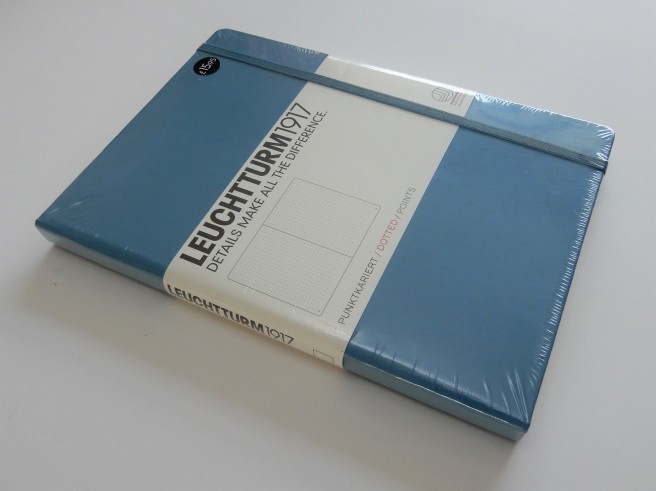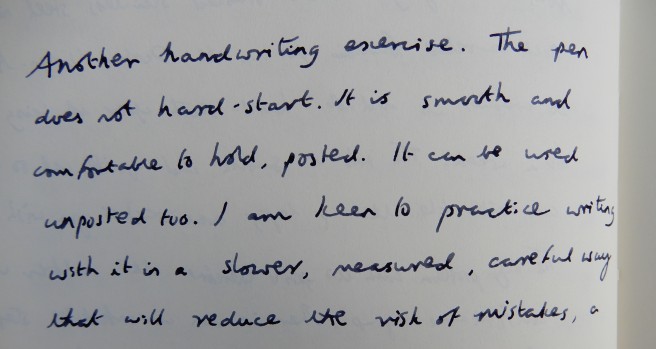Time for another episode of Inky Pursuits, an occasional series of round-ups of my fountain pen related news. I have had an eventful week pen-wise, including the arrival of five more fountain pens.
Last weekend, I had the task of registering a marriage in our local church in Golders Green, at which I am the “Authorised Person” for such duties. This means having a fountain pen inked with the regulation Registrar’s Blue Black iron gall ink from ESS (Ecclesiastical Stationery Supplies). I chose to use my TWSBI Classic in white with medium nib to complete the register and for the signing. The ink comes in 110 ml bottles and now needs to be used up within about 18 months of first opening, before it starts to lose its properties of darkening to a rich near black shade.
On Tuesday, I had the excitement of a New Pen Day, with the arrival of a Wing Sung 601 that I had ordered from China a couple of weeks earlier. This is the one that is based upon the Parker 51, with a hooded nib (although in stainless steel) with a stainless steel cap, but with a clear demonstrator body and section and a vacumatic filling system. There is a metal filling button, visible under the blind cap.
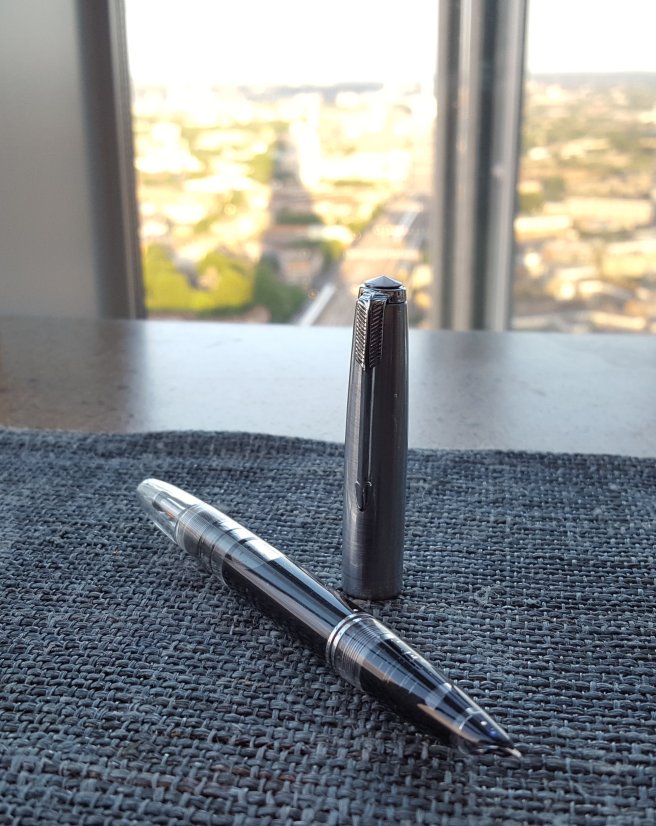
I am embarrassed to admit that I was stumped at first, on unboxing the pen, by something which looked like a red plastic converter, but which was filled with a clear liquid. Where does this go? Is it part of the vacumatic filling mechanism? No, it turned out to be a useful container of silicone grease for when you come to disassemble and clean the pen.
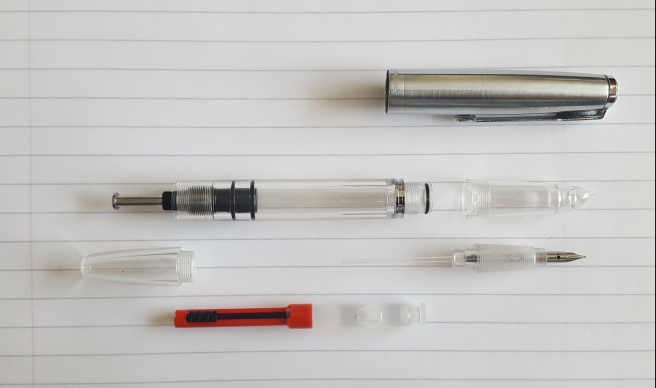
I played around with the pen at first, examining the nib under a loupe. The nib needed a little help to align the tines but this was fairly easily remedied, the only challenge being that the accessible part of nib is so tiny to hold. I then tried disassembling the section and learned that, when screwing it back on again, you need to remember to keep the nib so that it lines up, centred under the long lip of the section.
On inking the pen for the first time, I was surprised to see just how quick and efficient the filling system is. You just immerse the nib in the ink, give the button a few presses and the demonstrator body enables you to watch ink come rushing into the barrel. With each press of the button, the ink level rises higher. I gave it about seven presses by which time I had a really good fill, with far less air space remaining than I have ever achieved with a TWSBI Vac 700 (although I know that there is a technique for that, if you are feeling brave).
The pen then wrote pretty well. I was very pleasantly surprised. I had filled it with Conway Stewart Tavy, by Diamine (my go-to blue black ink) and was delighted with the wet, fine line that it produced. No skips or hard starts. I squiggled in all directions and was unable to get it to miss a beat. The nib is pleasantly feedbacky and copes well with smooth papers. It is firm though, and does not give any significant line width variation. But I love the look and feel of the pen and am really pleased with it. It is amazingly good value.
Later this week I met up for a coffee with one of the readers of my blog, who brought along a wonderful selection of his fountain pens to show me, gathered over years of travel to Germany, Singapore, Japan and other places. Now preparing to move to Australia in a few months and wishing to pass on some of the pens that he no longer uses regularly, he had been giving many away to pen enthusiasts. He offered me three of his Pilots and very generously, gave me a Custom 74, a Custom Heritage 92 and a third pen that I did not know, called the Pilot Elite, – a stylish pocket pen that becomes full length when posted and has an elegant 18k gold nib.
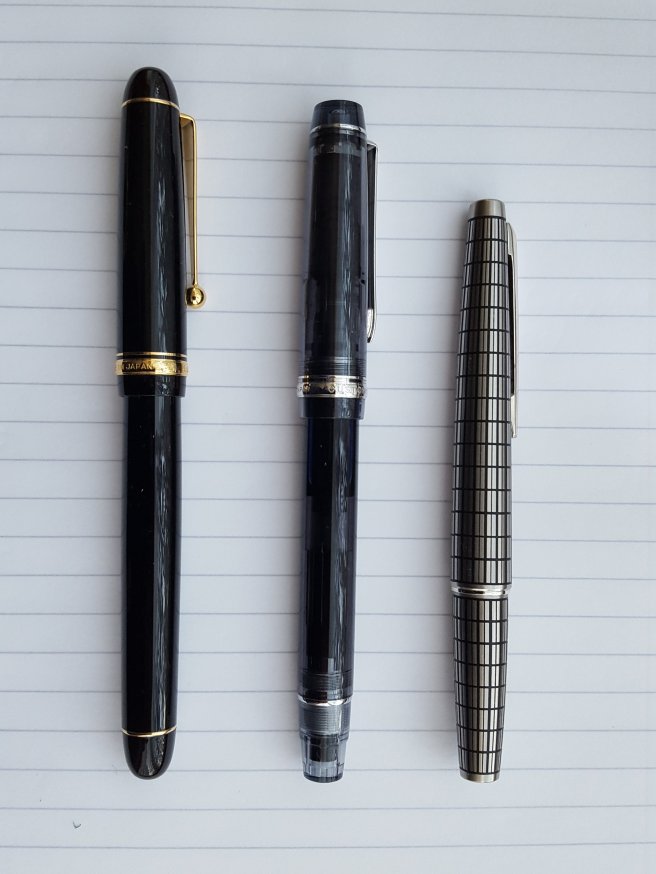
You can imagine my delight! I had never owned any of these models before, although I have long been interested in the C74 and CH92. Both had medium 14k gold nibs and were inked with Pilot Iroshizuku tsuki-yo, a lovely blue black. I have been much enjoying them both all weekend, slightly more so the CH92 as I prefer the shape and the nib is particularly wonderful. Meanwhile I have flushed the Elite and am taking a pause to enjoy pondering what ink to try in it!
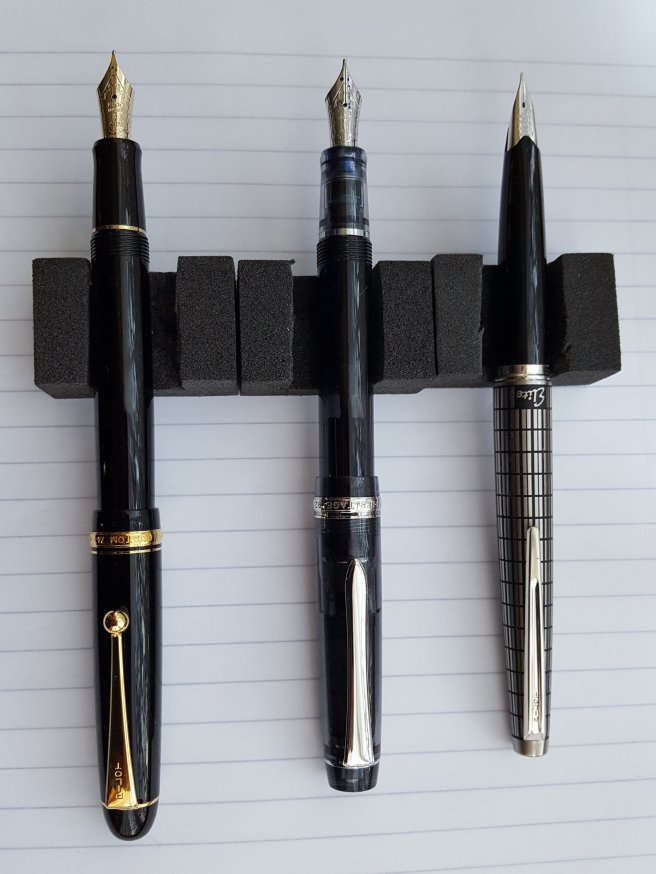
My friend also gave me the bottle of tsuki-yo plus a bottle of Diamine Sargasso Sea, a Schneider Rave XB retractable ball point pen and a few interesting Lamy fineliners which I had never seen in this country.

Finally, as if that was not enough fountain pen action for one week, I happened to find the Lamy Safari All Black, 2018 special edition today, in a blister pack with a box of black cartridges. I have been looking out for one in our local stationery shops ever since about February and despite searching in all the usual places, this was the first one that I had actually seen in the wild. It came with a medium nib, in black. I plan to keep it for use as a black ink pen, which is always useful to have. I do like the black-everything look, including the textured matte black body and black clip. Even the threads are jet black. A good stealthy pen to use in jungle warfare. Or in my office.


